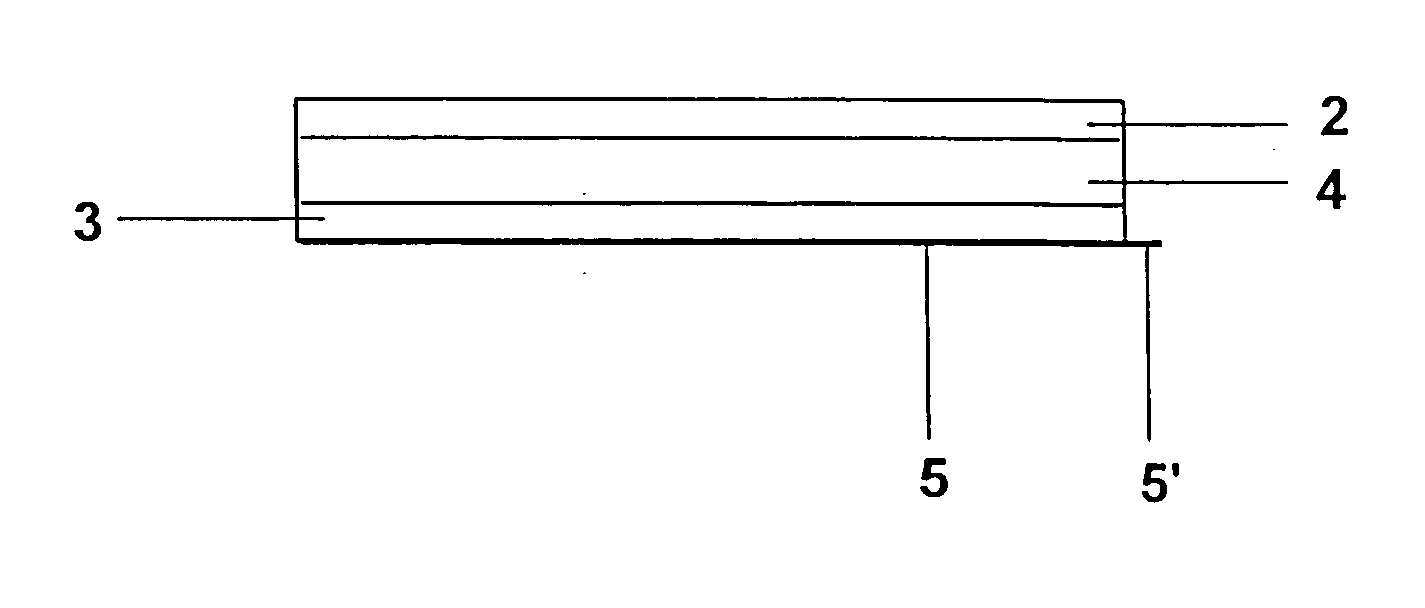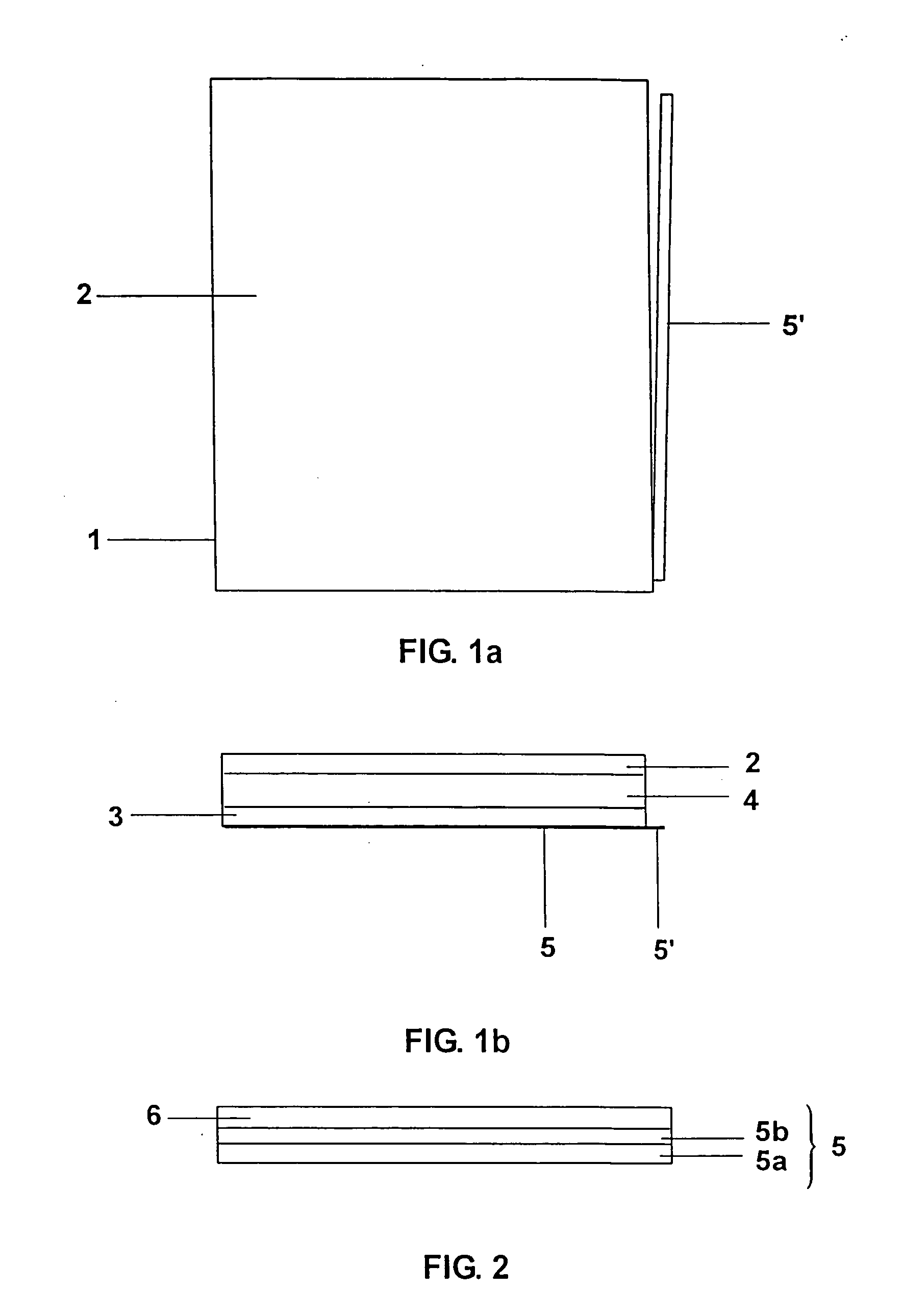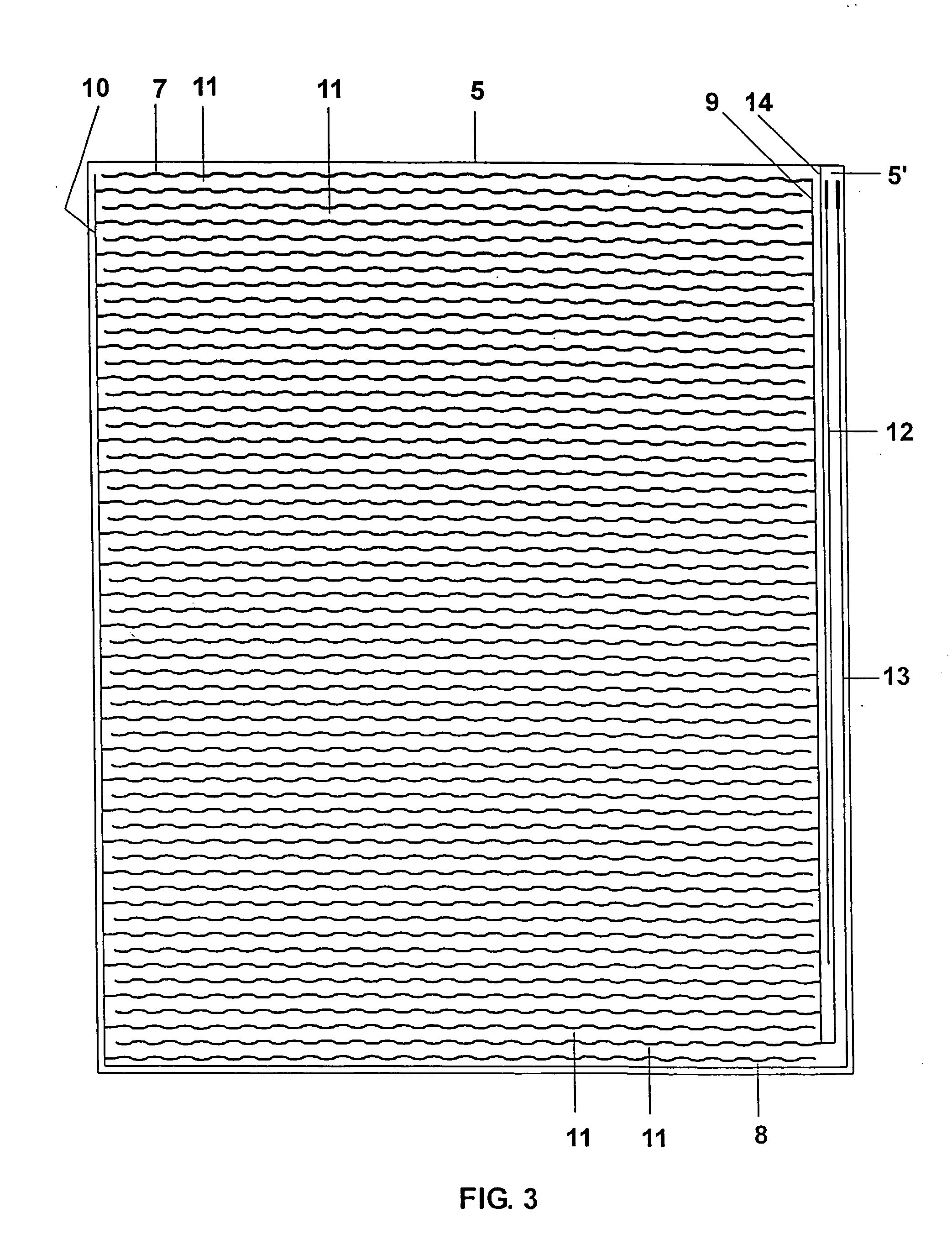Discharge lamp having at least one external electrode, and process for its production
a technology of discharge lamp and external electrode, which is applied in the manufacture of electric discharge tube/lamp, cold cathode, and electrode system, etc., can solve the problems of inability to discharge and impair the homogeneity of the luminous density of the lamp to an unacceptable extent, and achieves the effect of improving the reliability of the discharge lamp and simplifying the manufacturing process
- Summary
- Abstract
- Description
- Claims
- Application Information
AI Technical Summary
Benefits of technology
Problems solved by technology
Method used
Image
Examples
Embodiment Construction
[0019]FIGS. 1a, 1b show in schematic form a flat lamp 1 having a diagonal of 21.3″ and a side ratio of 4:3 in plan view and side view, respectively. The discharge vessel of the flat lamp 1 is formed by a front plate 2, a baseplate 3 and a frame 4 arranged between them, the frame 4 connecting the two plates 2, 3 to each other in a gas tight manner. Alternatively, it is also possible to dispense with a frame if baseplate and front plate are not both completely flat but, at least in the edge region, are shaped in such a way that the frame is, as it were, incorporated in at least one of the two plates. For further details in this regard, reference is made to the documents U.S. Pat. No. 5,994,849 and WO 03 / 017312 already cited, whose disclosure content in this regard is hereby incorporated by reference. In the interior of the discharge vessel there is xenon and neon with a partial filling pressure of about 10 kPa and about 20 kPa, respectively. Adhesively bonded to the outer side of the ...
PUM
 Login to View More
Login to View More Abstract
Description
Claims
Application Information
 Login to View More
Login to View More - R&D
- Intellectual Property
- Life Sciences
- Materials
- Tech Scout
- Unparalleled Data Quality
- Higher Quality Content
- 60% Fewer Hallucinations
Browse by: Latest US Patents, China's latest patents, Technical Efficacy Thesaurus, Application Domain, Technology Topic, Popular Technical Reports.
© 2025 PatSnap. All rights reserved.Legal|Privacy policy|Modern Slavery Act Transparency Statement|Sitemap|About US| Contact US: help@patsnap.com



